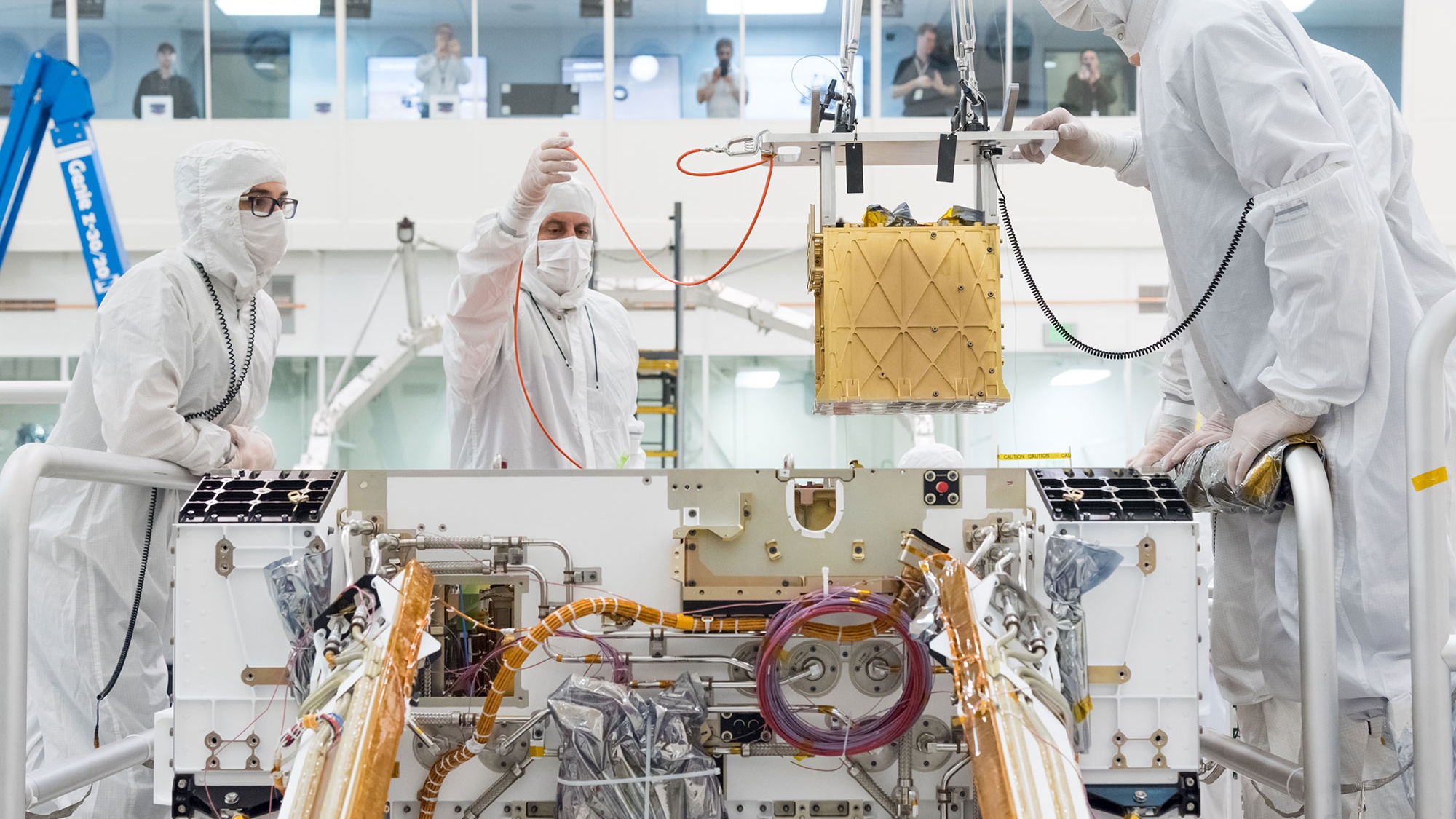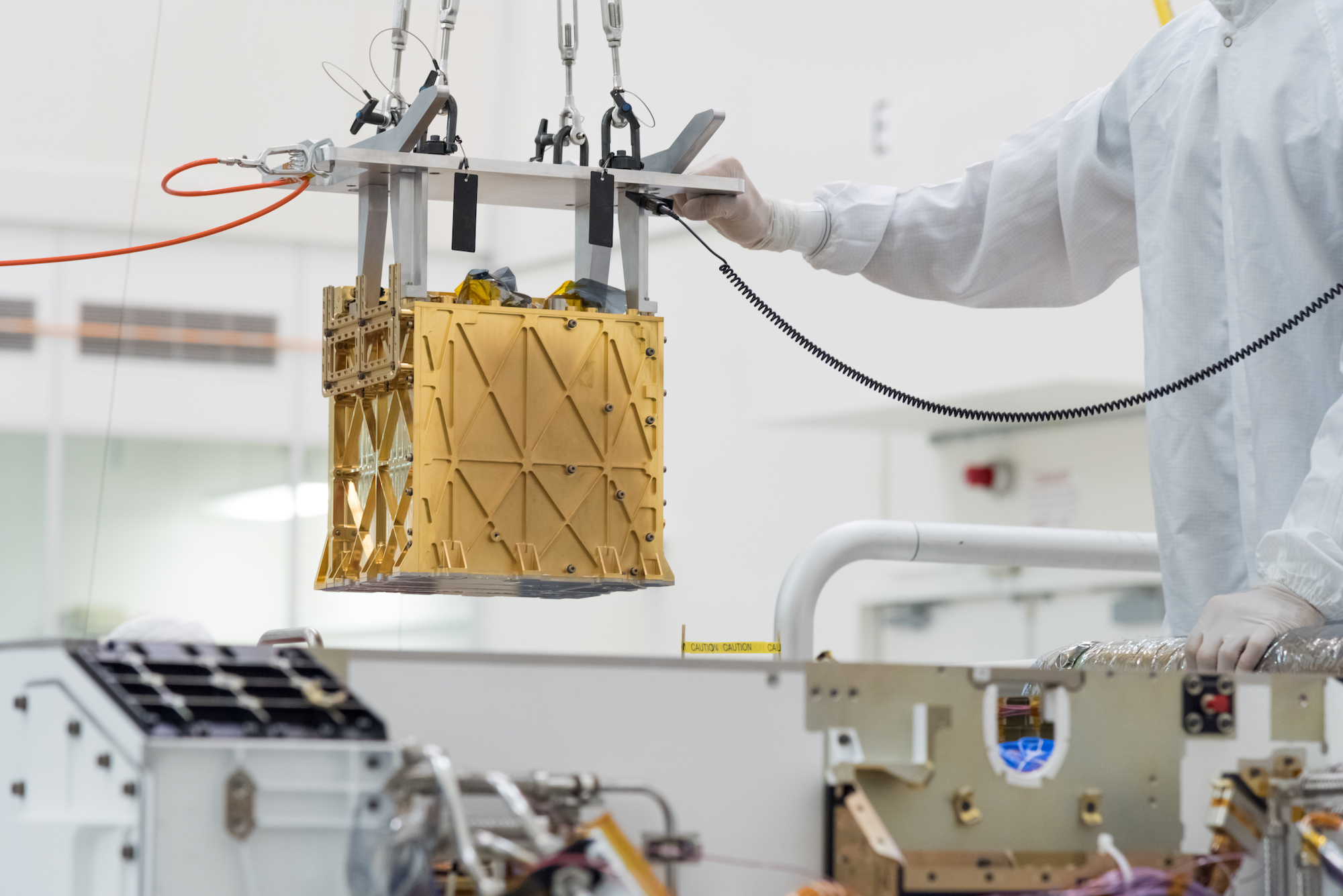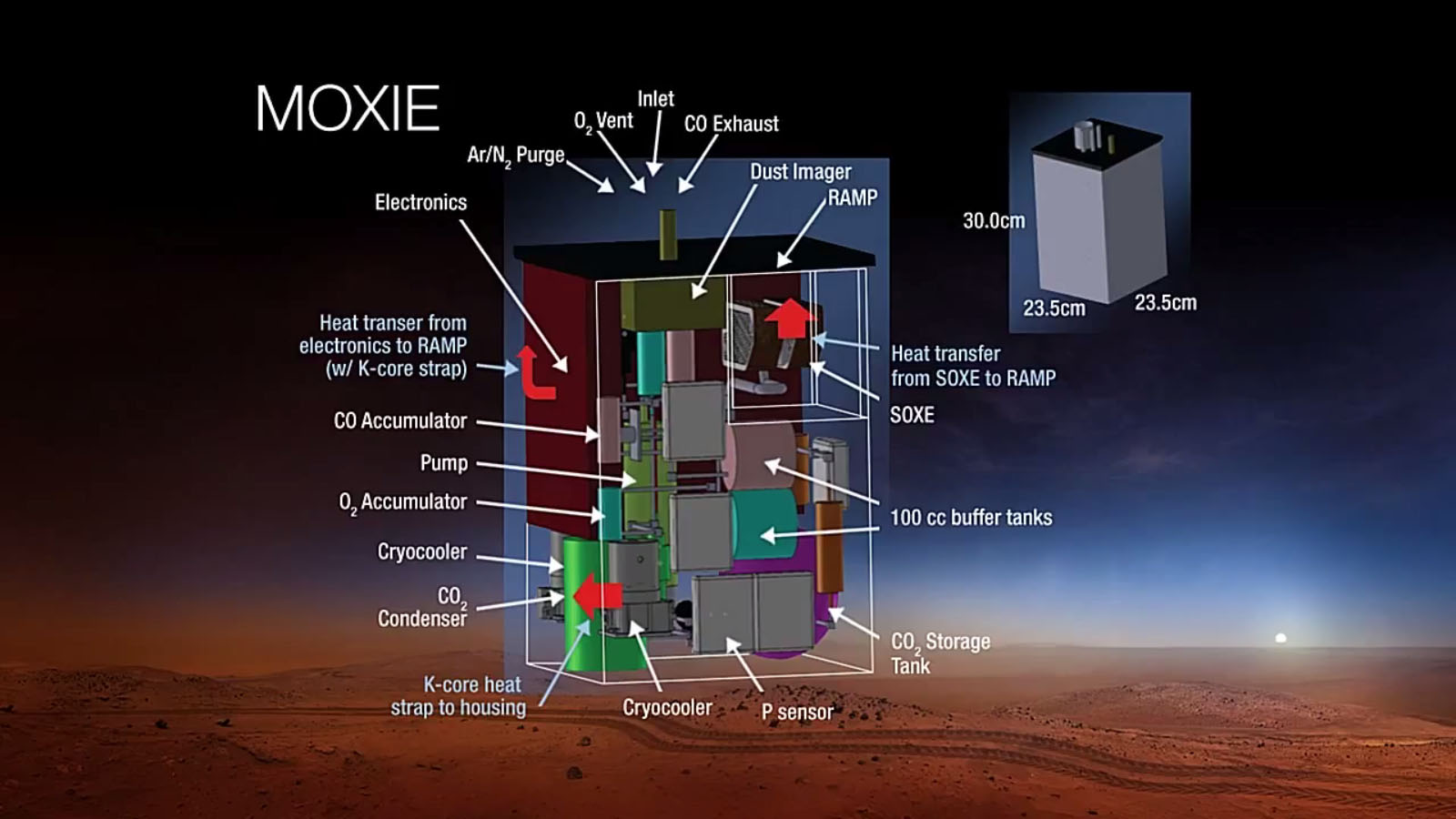NASA's Perseverance Mars rover wraps up MOXIE oxygen-making experiment
Nearly three years and 122 grams of oxygen later, MOXIE's work is done.

In February 2021, when NASA's car-sized Perseverance rover touched down on Mars to global fanfare, a modest golden box named MOXIE landed too.
Strapped into the life-detecting Perseverance, this toaster-sized block was ready to start revolutionizing the space exploration game by making oxygen on the Red Planet.
MOXIE, which stands for "Mars Oxygen In-Situ Resource Utilization Experiment," soon beganliving up to its name, generating oxygen at an ] impressive rate. It did so all the way until this past Aug. 7, when the mighty little cube produced 9.8 grams (0.35 ounces) of oxygen on its 16th and final run.
MOXIE's mission is now complete, NASA announced on Wednesday (Sept. 6). The device has produced a total of 122 grams (4.3 oz) of Martian oxygen — roughly the amount a small dog breathes in 10 hours, and twice as much as scientists thought MOXIE could make during its tenure.
At its most efficient, MOXIE produced 12 grams (0.4 oz) of the life-sustaining element every hour. And the oxygen it made was at least 98% pure — numbers that bode well for future, scaled-up efforts that could support human exploration of the Red Planet.
"When the first astronauts land on Mars, they may have the descendants of a microwave-oven-size device to thank for the air they breathe and the rocket propellant that gets them home," NASA officials wrote in a statement on Wednesday.
Related: NASA's Ingenuity helicopter soars past 100 minutes of total Mars flight time
Breaking space news, the latest updates on rocket launches, skywatching events and more!
Why not just take oxygen from Earth?
There are two major advantages of making oxygen on Mars. For one, of course, it's important for future astronauts headed to the deserted world to have as much oxygen supply as possible during their stay.
"By proving this technology in real-world conditions, we’ve come one step closer to a future in which astronauts 'live off the land' on the Red Planet," Trust Kortes, director of technology demonstrations at NASA's Space Technology Mission Directorate, said in the statement.
But second, and maybe most importantly, oxygen is a key component of rocket fuel.
When space agencies eventually send astronauts to Mars, that trip is (hopefully) not going to be a one-way excursion. Mission planners are going to have to send enough rocket fuel to the planet such that the crew can launch themselves back to Earth when they've finished their missions. And that quantity of return-trip rocket fuel is going to be pretty hefty. To burn its fuel, as NASA's Jet Propulsion Laboratory explains, a rocket must have more oxygen (which serves as an oxidizer) by weight.
For example, getting four astronauts off the Martian surface would require about 15,000 pounds (7 metric tons) of rocket fuel and 55,000 pounds (25 metric tons) of oxygen. And, well, that's 55,000 pounds of oxygen the crew must take to Mars in addition to whatever oxygen is needed to get the rocket off Earth and the oxygen supply required for the astronauts to breathe. Not to mention all the other payloads the team would probably be carrying onboard.


So, scientists reasoned, why not remove some of that weight by making the oxygen part of rocket fuel right on the Red Planet?
It'd be better for the environment, more cost-effective and generally make humanity's dream of an eventual Martian society much more feasible.
"Rocket propellant depends on oxygen, and future explorers will depend on producing propellant on Mars to make the trip home," Jim Reuter, associate administrator at NASA's Space Technology Mission Directorate, said in a statement following MOXIE's first oxygen extraction, back in April 2021.
In fact, future lunar astronauts could benefit from MOXIE, too, if the device can translate its capabilities to operate on the moon's surface — a much closer dream, as that's a world we know quite intimately in comparison to Mars. India's Chandrayaan-3 rover (now in sleep mode) actually landed at the lunar south pole just last month in order to start exploring how we can mine water on the moon. NASA's Artemis missions also intend to work on such a feat because, like oxygen, water is also key in developing rocket fuel. (It can be split into its constituent hydrogen and oxygen.)
Minimizing payloads seems to be a paramount venture for space agencies looking toward a future when humans aren't restricted to lifestyles on Earth.
"Developing technologies that let us use resources on the moon and Mars is critical to build a long-term lunar presence, create a robust lunar economy, and allow us to support an initial human exploration campaign to Mars," NASA Deputy Administrator Pam Melroy said in Wednesday's statement.
How does MOXIE work?
In a nutshell, MOXIE has the ability to take carbon dioxide molecules from Mars' thin atmosphere, which are made of one carbon atom and two oxygen atoms, and pluck those oxygen bits out. That's basically it.
The hard part, however, is that this process requires a temperature of approximately 1,470 degrees Fahrenheit (800 degrees Celsius). It would need to be done in a variety of conditions that take place on Mars as the planet progresses through its year. The former of these hurdles was sorted by MOXIE being made of heat-tolerant materials, including nickel alloy parts, a lightweight aerogel and a gold coating that can reflect infrared heat and therefore keep Perseverance safe from MOXIE's scorching situation.

Gold coatings are known to be great for this reason — the James Webb Space Telescope's mirrors have such a layer, for example, because the observatory is built to capture specific infrared wavelengths from deep space. The gold part helps reflect infrared light onto the scope's infrared-parsing sensors.
Returning to MOXIE: In short, the mission was a resounding success. So much so that the team says the next step isn't to build MOXIE 2.0, but rather a full-scale system that includes a MOXIE box in conjunction with a way to store and liquify all the oxygen created.
"We have to make decisions about which things need to be validated on Mars," the instrument's principal investigator, Michael Hecht of the Massachusetts Institute of Technology, said in the statement.
"I think there are many technologies on that list; I’m very pleased MOXIE was first."
Join our Space Forums to keep talking space on the latest missions, night sky and more! And if you have a news tip, correction or comment, let us know at: community@space.com.

Monisha Ravisetti is Space.com's Astronomy Editor. She covers black holes, star explosions, gravitational waves, exoplanet discoveries and other enigmas hidden across the fabric of space and time. Previously, she was a science writer at CNET, and before that, reported for The Academic Times. Prior to becoming a writer, she was an immunology researcher at Weill Cornell Medical Center in New York. She graduated from New York University in 2018 with a B.A. in philosophy, physics and chemistry. She spends too much time playing online chess. Her favorite planet is Earth.
